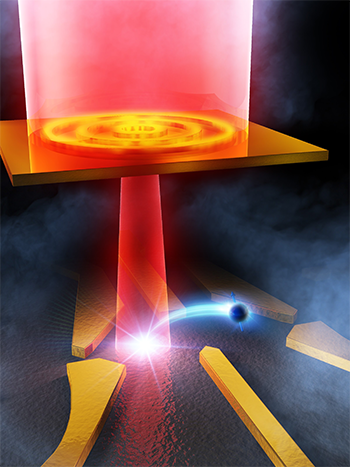Exploring the Revolutionary Impact of Nanoantennas in Nanotechnology
Definition: Nanoantennas, minuscule devices engineered to manipulate light at the nanoscale, are pivotal in advancing photovoltaics, sensor technology, and particularly in the development of nanoantenna-enhanced biosensors and nanoantennas for cancer detection. These devices demonstrate the remarkable ability to direct and control electromagnetic fields, pushing the boundaries of optical and medical technologies.

Deep Dive into Nanoantenna Mechanics
At their core, nanoantennas leverage the principles of plasmonics to interact with light beyond the diffraction limit. This interaction is pivotal for creating highly localized electromagnetic fields that can be used to enhance the performance of photonic devices and enable high-precision light manipulation.
Operational Excellence of Nanoantennas
Through the intricate design and fabrication of nanoantennas, these devices can focus light into sub-wavelength volumes, dramatically enhancing light-matter interaction at the nanoscale. This capability is fundamental for the development of highly sensitive nanoantenna-enhanced biosensors, which can detect biomolecules at unprecedentedly low concentrations.
Expanding Applications of Nanoantennas
- Nanoantenna-Enhanced Biosensors: Utilizing their ability to concentrate electromagnetic fields, nanoantennas significantly improve the sensitivity and specificity of biosensors, offering new avenues in early disease detection and real-time monitoring of biological processes.
- Nanoantennas in Cancer Detection: By focusing light to probe cellular components with high precision, nanoantennas facilitate the identification of cancerous cells at early stages, promising a revolution in oncology diagnostics.
- Photovoltaic Efficiency: Nanoantennas are instrumental in developing next-generation solar cells, where they enhance light absorption and conversion efficiency, contributing to more sustainable energy solutions.
- Advanced Optical Computing: The manipulation of light with nanoantennas opens up possibilities for ultra-fast and energy-efficient optical computing systems, marking a significant leap forward in computational technology.
Challenges and Future Directions
Despite the groundbreaking potential of nanoantennas, challenges such as complex fabrication techniques and scalability must be addressed. Ongoing research is focused on overcoming these hurdles, with significant progress in material science and nanofabrication technologies.
Innovations in Nanoantenna Technology
The field of nanoantennas continues to evolve with advances in tunable nanoantennas and the use of exotic materials like graphene. These innovations enhance the versatility and performance of nanoantennas, broadening their application spectrum.
Environmental Impact and Sustainability
Nanoantennas contribute to environmental sustainability through their application in efficient solar energy harvesting and pollution monitoring. Their development aligns with global efforts to mitigate environmental challenges through nanotechnology.
Further Reading
IETE Technical Review, State-of-the-Art of Nanoantenna Designs in Infrared and Visible Regions: An Application-Oriented Review
Advanced Electromagnetics , Design and Analysis of Nanoantenna Arrays for Imaging and Sensing Applications at Optical Frequencies
